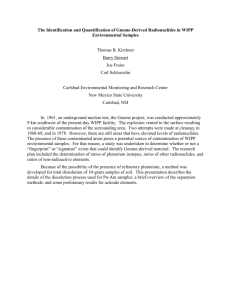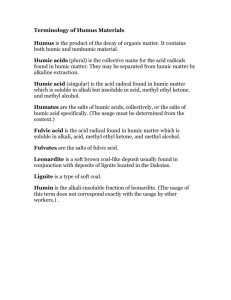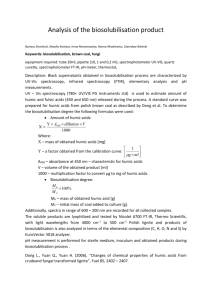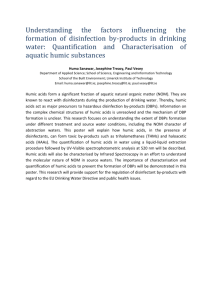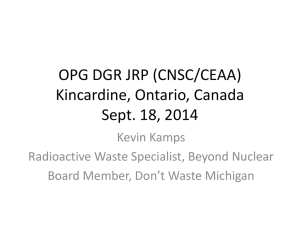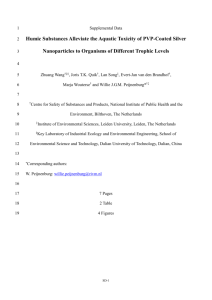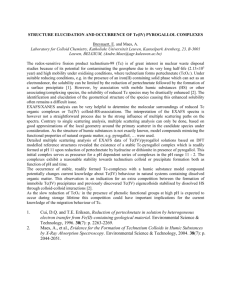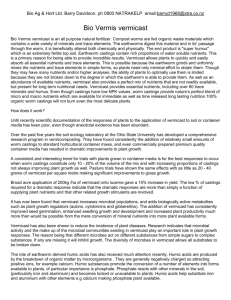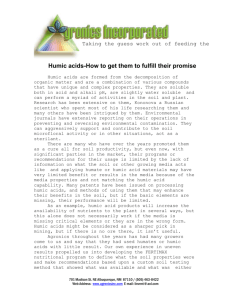HumicacidsWIPP
advertisement
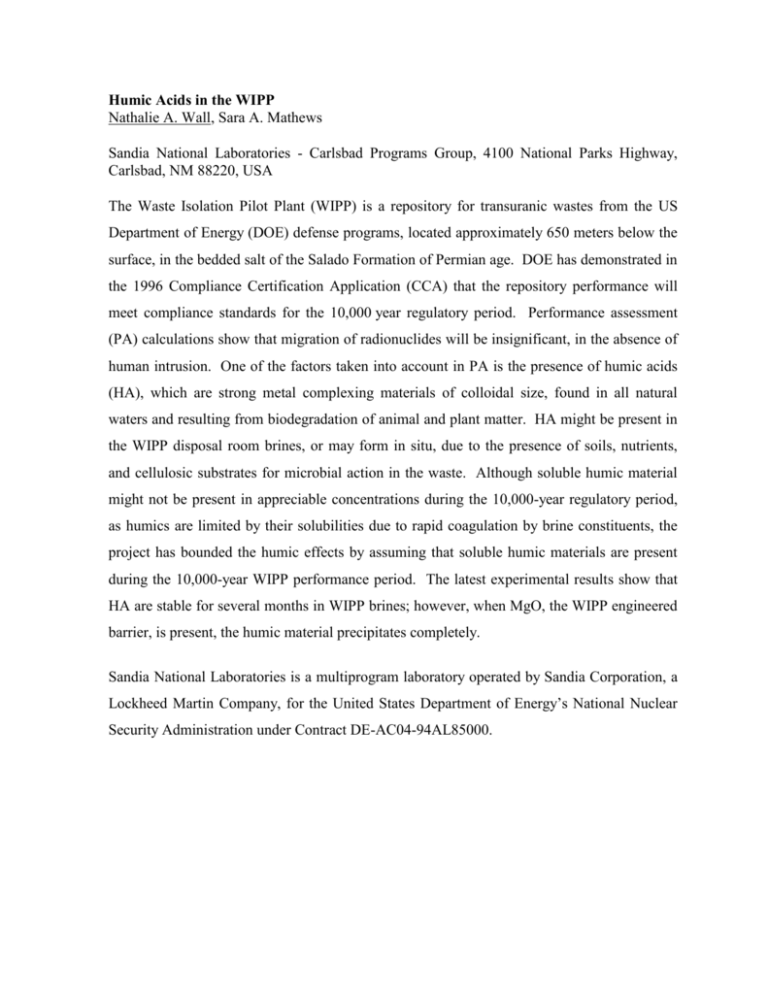
Humic Acids in the WIPP Nathalie A. Wall, Sara A. Mathews Sandia National Laboratories - Carlsbad Programs Group, 4100 National Parks Highway, Carlsbad, NM 88220, USA The Waste Isolation Pilot Plant (WIPP) is a repository for transuranic wastes from the US Department of Energy (DOE) defense programs, located approximately 650 meters below the surface, in the bedded salt of the Salado Formation of Permian age. DOE has demonstrated in the 1996 Compliance Certification Application (CCA) that the repository performance will meet compliance standards for the 10,000 year regulatory period. Performance assessment (PA) calculations show that migration of radionuclides will be insignificant, in the absence of human intrusion. One of the factors taken into account in PA is the presence of humic acids (HA), which are strong metal complexing materials of colloidal size, found in all natural waters and resulting from biodegradation of animal and plant matter. HA might be present in the WIPP disposal room brines, or may form in situ, due to the presence of soils, nutrients, and cellulosic substrates for microbial action in the waste. Although soluble humic material might not be present in appreciable concentrations during the 10,000-year regulatory period, as humics are limited by their solubilities due to rapid coagulation by brine constituents, the project has bounded the humic effects by assuming that soluble humic materials are present during the 10,000-year WIPP performance period. The latest experimental results show that HA are stable for several months in WIPP brines; however, when MgO, the WIPP engineered barrier, is present, the humic material precipitates completely. Sandia National Laboratories is a multiprogram laboratory operated by Sandia Corporation, a Lockheed Martin Company, for the United States Department of Energy’s National Nuclear Security Administration under Contract DE-AC04-94AL85000.
